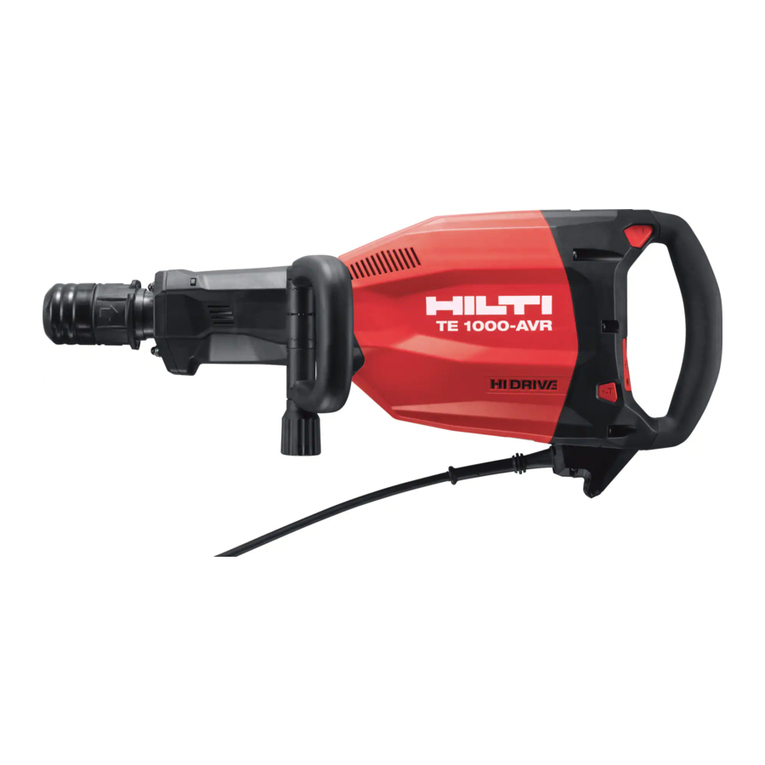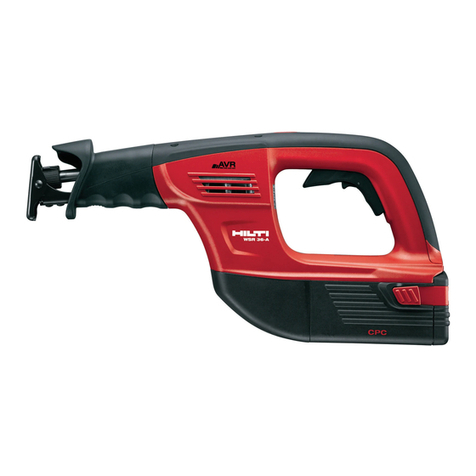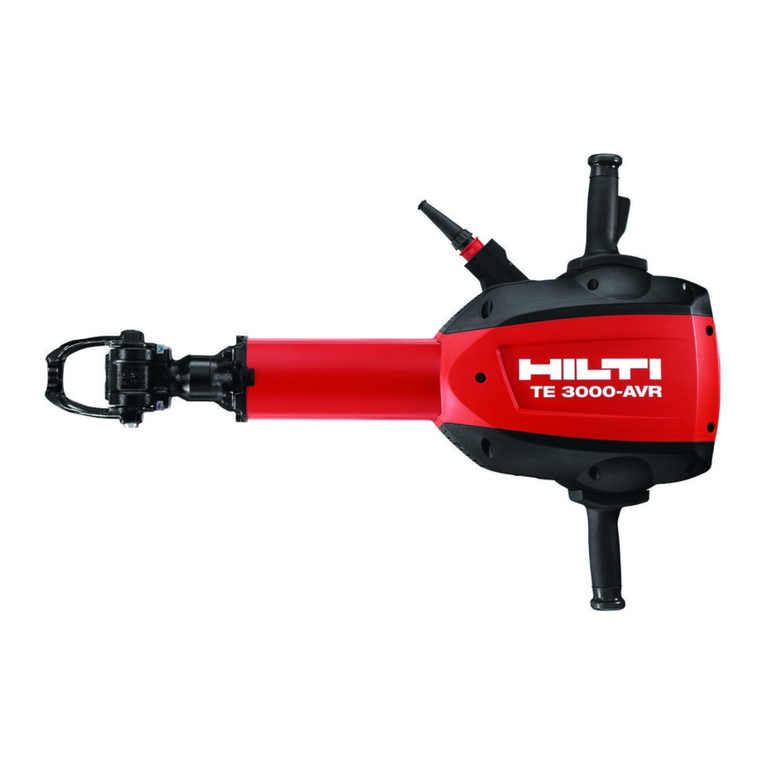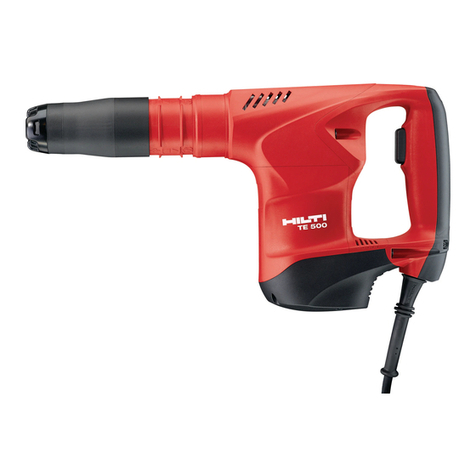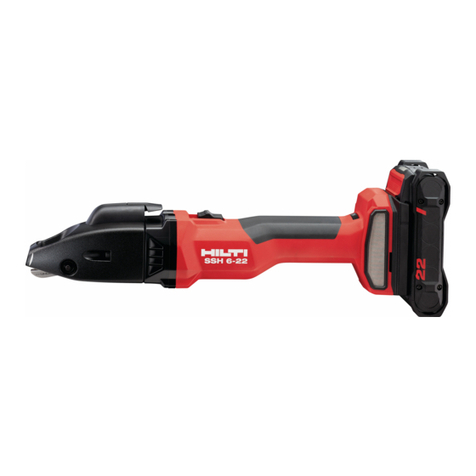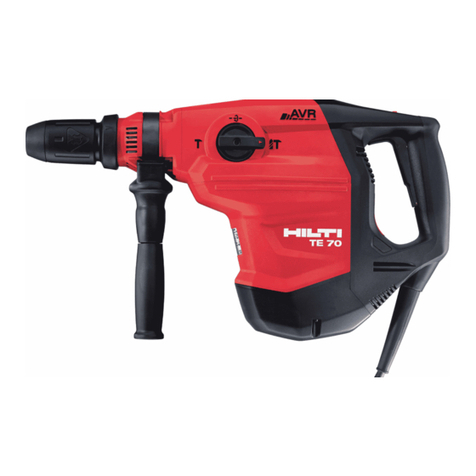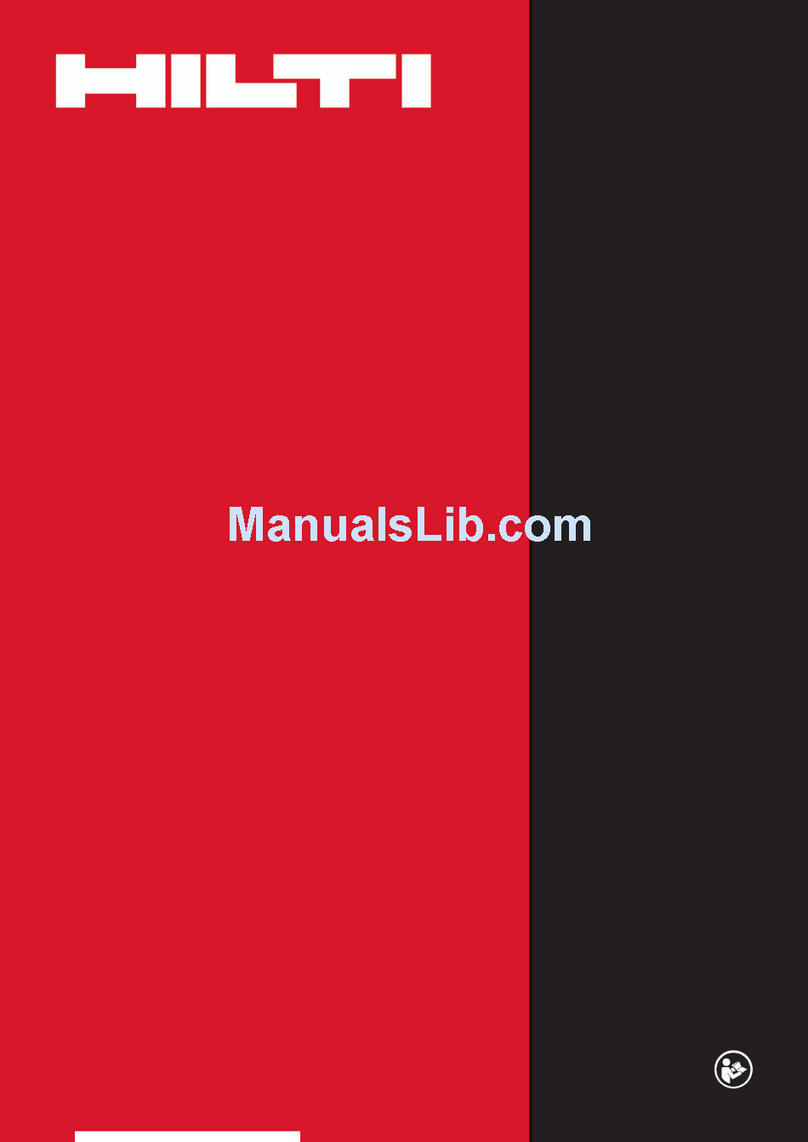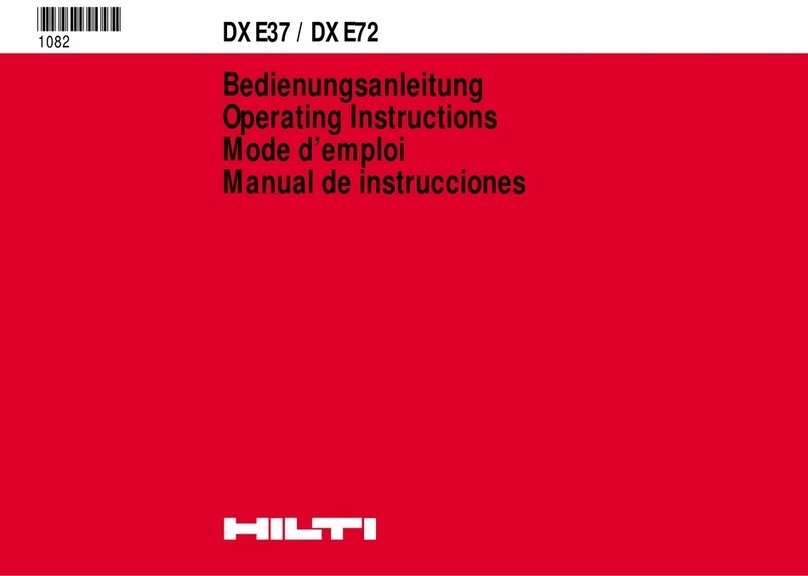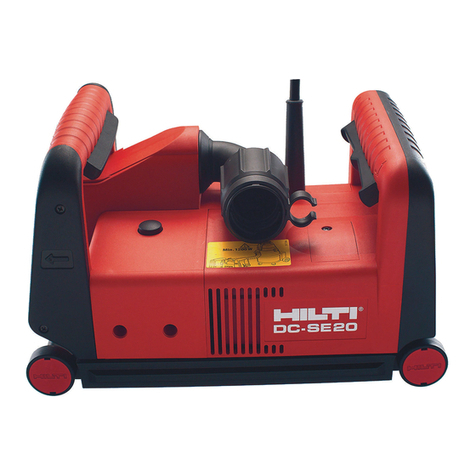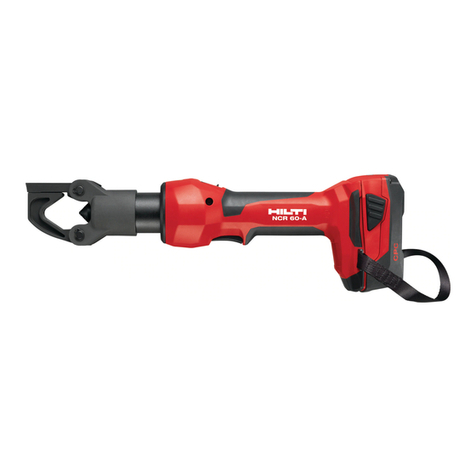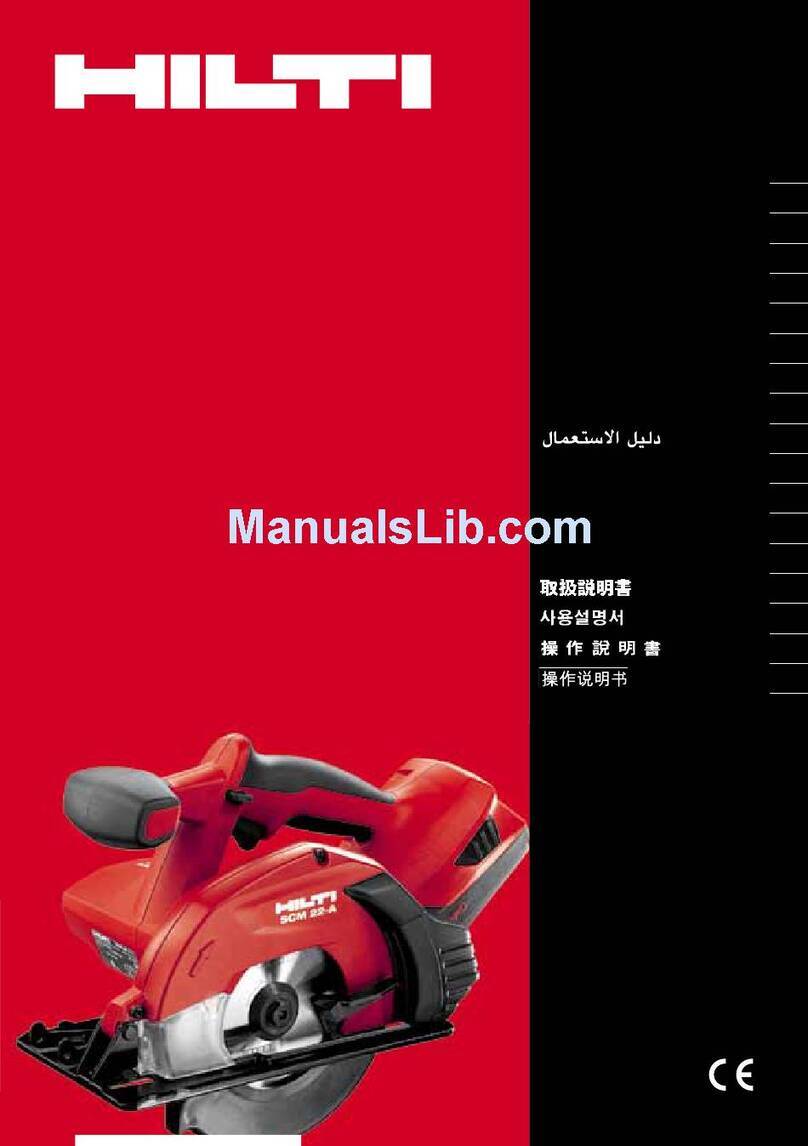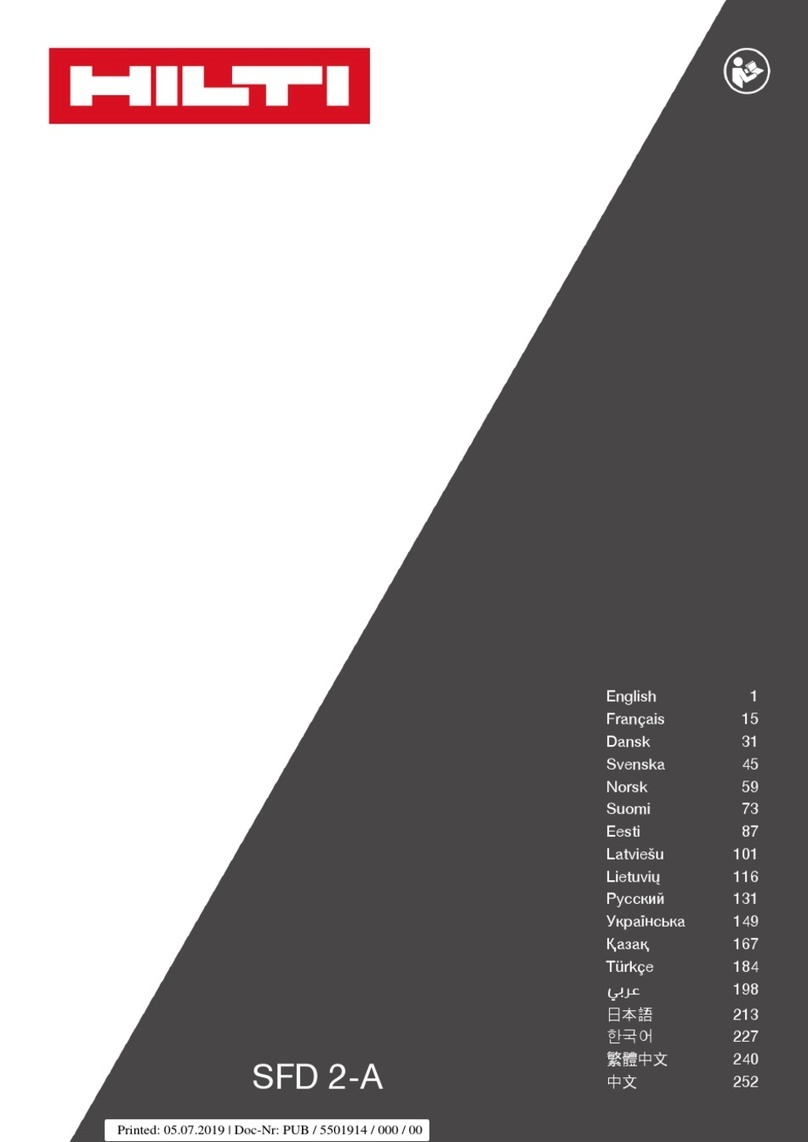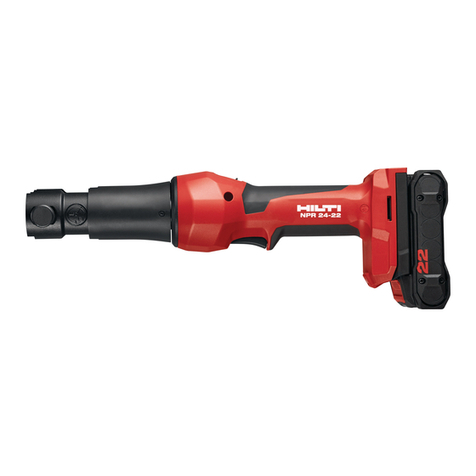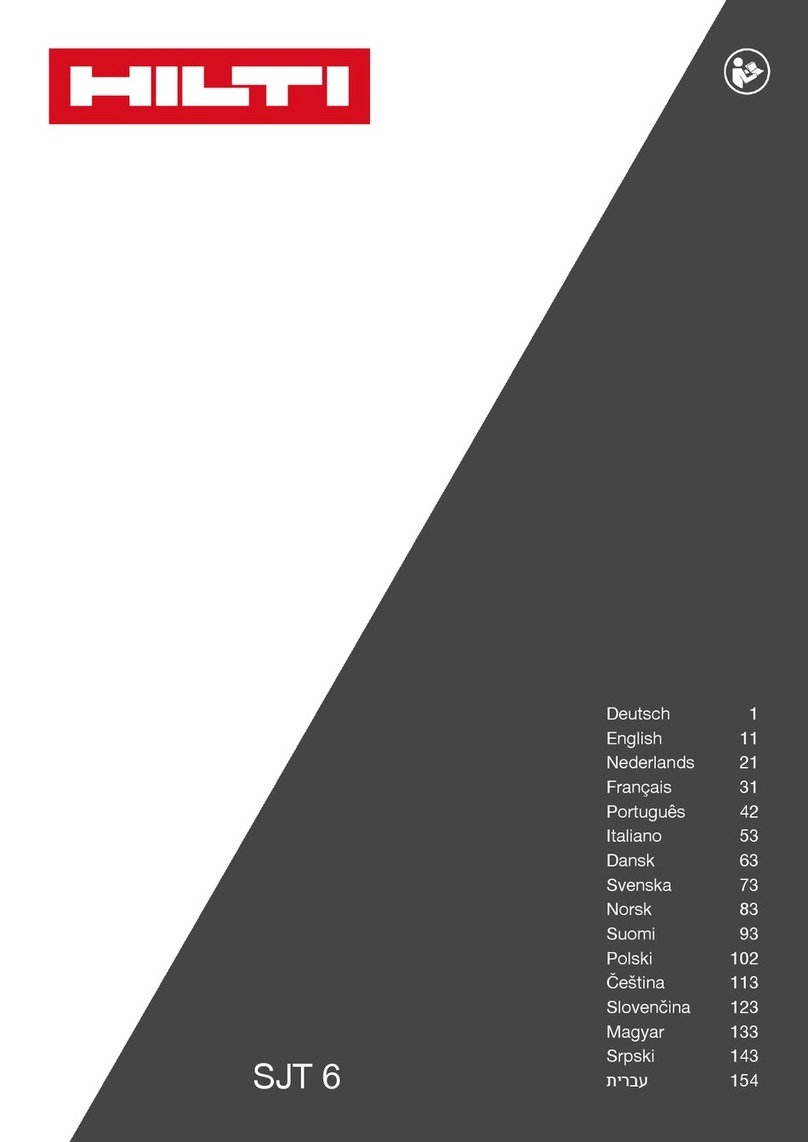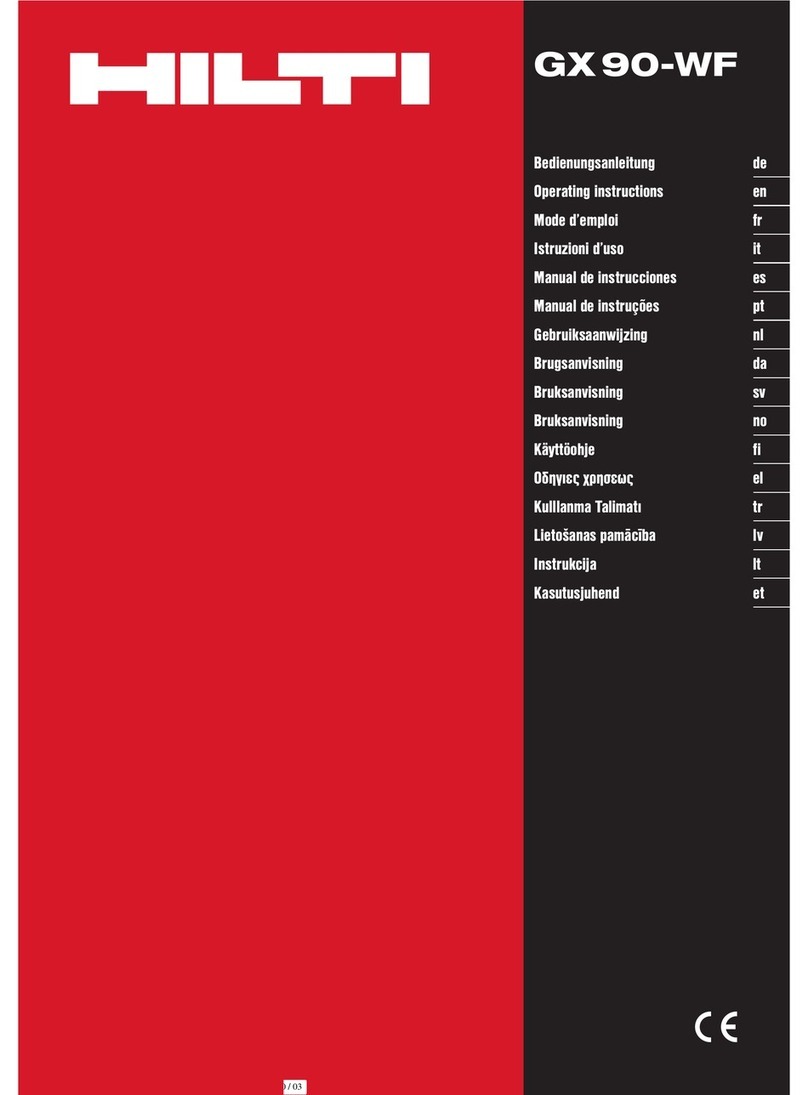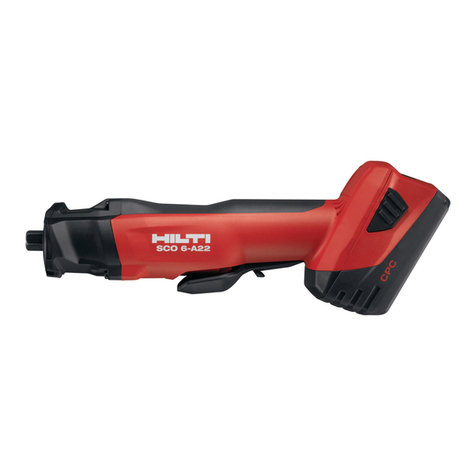
tached to a rotating part of the power tool may result
in personal injury.
e) Do not overreach. Keep proper footing and bal-
ance at all times. This enables better control of the
power tool in unexpected situations.
f) Dress properly. Do not wear loose clothing or
jewellery. Keep your hair, clothing and gloves
away from moving parts. Loose clothes, jewellery
or long hair can be caught in moving parts.
g) If devices are provided for the connection of dust
extraction and collection facilities, ensure these
are connected and properly used. Use of dust
collection can reduce dust-related hazards.
2.1.4 Power tool use and care
a) Do not force the power tool. Use the correct
power tool for your application. The correct power
tool will do the job better and safer at the rate for
which it was designed.
b) Do not use the power tool if the switch does not
turn it on and off. Any power tool that cannot be
controlled with the switch is dangerous and must be
repaired.
c) Disconnect the plug from the power source
and/or the battery pack from the power tool
before making any adjustments, changing
accessories, or storing power tools. Such
preventive safety measures reduce the risk of
starting the power tool accidentally.
d) Store idle power tools out of the reach of chil-
dren and do not allow persons unfamiliar with the
power tool or these instructions to operate the
power tool. Power tools are dangerous in the hands
of untrained users.
e) Maintain power tools. Check for misalignment or
binding of moving parts, breakage of parts and
any other condition that may affect the power
tool’s operation. If damaged, have the power tool
repaired before use. Many accidents are caused by
poorly maintained power tools.
f) Keep cutting tools sharp and clean. Properly main-
tained cutting tools with sharp cutting edges are less
likely to bind and are easier to control.
g) Use the power tool, accessories and tool bits etc.
in accordance with these instructions, taking into
account the working conditions and the work to
be performed. Use of the power tool for opera-
tions different from those intended could result in a
hazardous situation.
2.1.5 Battery tool use and care
a) Recharge only with the charger specified by the
manufacturer. A charger that is suitable for one
type of battery pack may create a risk of fire when
used with another battery pack.
b) Use power tools only with specifically designated
battery packs. Use of any other battery packs may
create a risk of injury and fire.
c) When battery pack is not in use, keep it away
from other metal objects, like paper clips, coins,
keys, nails, screws or other small metal objects,
that can make a connection from one terminal to
another. Shorting the battery terminals together may
cause burns or a fire.
d) Under abusive conditions, liquid may be ejected
from the battery; avoid contact. If contact acci-
dentally occurs, flush with water. If liquid contacts
eyes, additionally seek medical help. Liquid ejec-
ted from the battery may cause irritation or burns.
2.1.6 Service
a) Have your power tool serviced by a qualified repair
person using only identical replacement parts.
This will ensure that the safety of the power tool is
maintained.
2.2 Additional safety rules
2.2.1 Power tool use and care
a) Modification of the machine or tampering with its
parts is not permissible.
b) Never point the tool toward yourself or other per-
sons.
c) The tool may be operated only when in faultless
condition.
d) Use only foil pack holders of a type approved for
use with the tool.
e) Do not use damaged foil pack holders or damaged
foil packs.
f) The tool, the cradle for the foil pack holders,
the piston rods with pressure pieces and the foil
pack holders must be clean and free from foreign
matter.
2.2.2 Battery tool use and care
a) Ensure the switch is in the off position before
inserting battery pack. Inserting the battery pack
into power tools that have the switch on invites
accidents.
b) Do not expose batteries to high temperatures and
keep them away from fire. This presents a risk of
explosion.
c) Do not disassemble, squash or incinerate batter-
ies and do not subject them to temperatures over
80°C. This presents a risk of fire, explosion or injury
through contact with caustic substances.
d) Observe the special guidelines applicable to the
transport, storage and use of Li-ion batteries.
e) Do not charge or continue to use damaged bat-
teries (e.g. batteries with cracks, broken parts,
bent or pushed-in and/or pulled-out contacts).
f) If the battery is too hot to touch it may be defective.
Place the tool in a location where it can be kept
under observation, well away from flammable ma-
terials, and allow it to cool down. Contact Hilti
Service after the battery has cooled down.
2.2.3 Work area safety
a) Ensure that the workplace is well ventilated.
b) The appliance is not intended for use by debilit-
ated persons who have received no special train-
ing. Keep the appliance out of reach of children.
en
12
Printed: 25.02.2015 | Doc-Nr: PUB / 5219022 / 000 / 00
